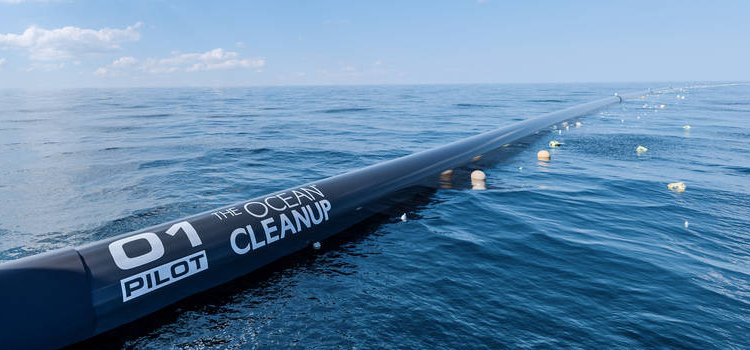The Ocean Cleanup is an organization that was established to develop an effective way to rid the world’s oceans of the plastics that have been accumulating in larges areas called ocean garbage patches. There are five of these garbage patches located in different oceans throughout the globe, the largest of all of them is located in the Pacific Ocean.
The Great Pacific Garbage Patch
The world’s oceans are home to billions of lifeforms, this is similar to dry land, which is home to more than 6 billion humans and countless billions of other lifeforms. We have been living with an ever-growing amount of plastic waste with no end in sight. Unfortunately, this issue with plastic does not end at the shoreline.
It was discovered that there are five extremely large garbage patches located in five different parts of the globe. The largest of all five is called the Great Pacific Garbage Patch and its stretch from the California coast all the way to the coast of Hawaii. The patch consists of millions and millions of pieces of floating plastic of varying size and shapes.
The Great Pacific Garbage Patch (GPGP) is 1.6 million square kilometers or twice the size of the state of Texas. The accumulation of more than trillion pieces of plastic floating is estimated to weigh in excess of 80,000 tons. It is believed that based on aerial measurements and estimations there are more than 5 trillion pieces of floating plastic in the five ocean garbage patches.
What is a garbage patch and how do they form?
A garbage patch is what is referred to when large amounts of floating trash, mostly plastics accumulate in one area of the ocean. Since most of plastics that end up in the ocean from the rivers that empty into them are more buoyant they are picked up by the ocean currents and collect into very large and vast collections of plastics. Depending on where the plastics enter the ocean, will determine which one of the five major garbage patches.
Unfortunately, just like on land, there is no way that the plastic trash is going to decompose or disintegrate floating in the water. This means the likelihood of these huge concentrations of trash and plastic breaking up and going is pretty much nill.
The Ocean Cleanup
While the scope of the problem may seem like it is too vast for there to be a solution, thanks to an organization called The Ocean Cleanup and the project that they developed is designed to bring the necessary technologies, people and tools together to tackle the growing problem of the GPGP and the other four ever expanding patches of floating debris. While traditional methods of cleaning up trash usually would involve the use of nets, boats, and people to literally skim the water to collect the floating debris would take of thousands of years.
However, using a superior technology that they developed, the people at The Ocean Cleanupfigured out that there is a much better and safer way to tackle this seemingly tough problem. If they are right, by their estimation that they would be able to reduce the size of the Great Pacific Garbage Patch.
The System that is going to be used
In order to cut the estimated cleanup way down a new type of system would have to be developed in order to be able to begin cleaning up the estimated 18 billion pieces is plastic that happens to be floating in the world’s oceans. The unique system they developed would not require as much manpower which would also help to keep the overall cost of the huge project lower.
The system that was developed is a combination of different technologies that are all used in concert to create the overall system that they believe will allow them to remove enough floating plastic from the Great Pacific Garbage Patch. The new system uses an algorithm and a fully autonomous control system that allows it to harness the power of the same currents that put all of the plastic in the same precise area in the first place.
It takes a lot of dedication and money
As you might imagine anything this size and scope will be amazingly expensive to carry out and they will need people who possess certain skill sets and who are looking for a great cause for them to get behind. In order to raise the kind of money that was necessary to first develop the system and then begin the planning stage of the deployment, the had to secure sponsorship from companies and organizations that would be able to pump in millions of dollars into the project. Once they were able to find a lockdown the larger sponsors that would make it possible to fund the majority of the money that it would take to pay out for everything that it would cost.
The next step was to create and establish a way for ordinary people to find out about The Ocean Cleanup project and want to get involved. What they came up with is a donation page that anyone can go to and decide how much money that they want to give to this noble cause.
A great cause for a great company to support
With our close proximity to the area identified earlier in this article called the Great Pacific Garbage Patch, Caribou360 answered the call to help out monetarily to protect our oceans for generations to come. If you would like to learn more about this wonderful cause and possibly join us and donate some of your own money, please visit the official website of The Ocean Cleanup: https://www.theoceancleanup.com/
Update: A quantitative analysis linking sea turtle mortality and plastic debris ingestion
https://www.nature.com/articles/s41598-018-30038-z
